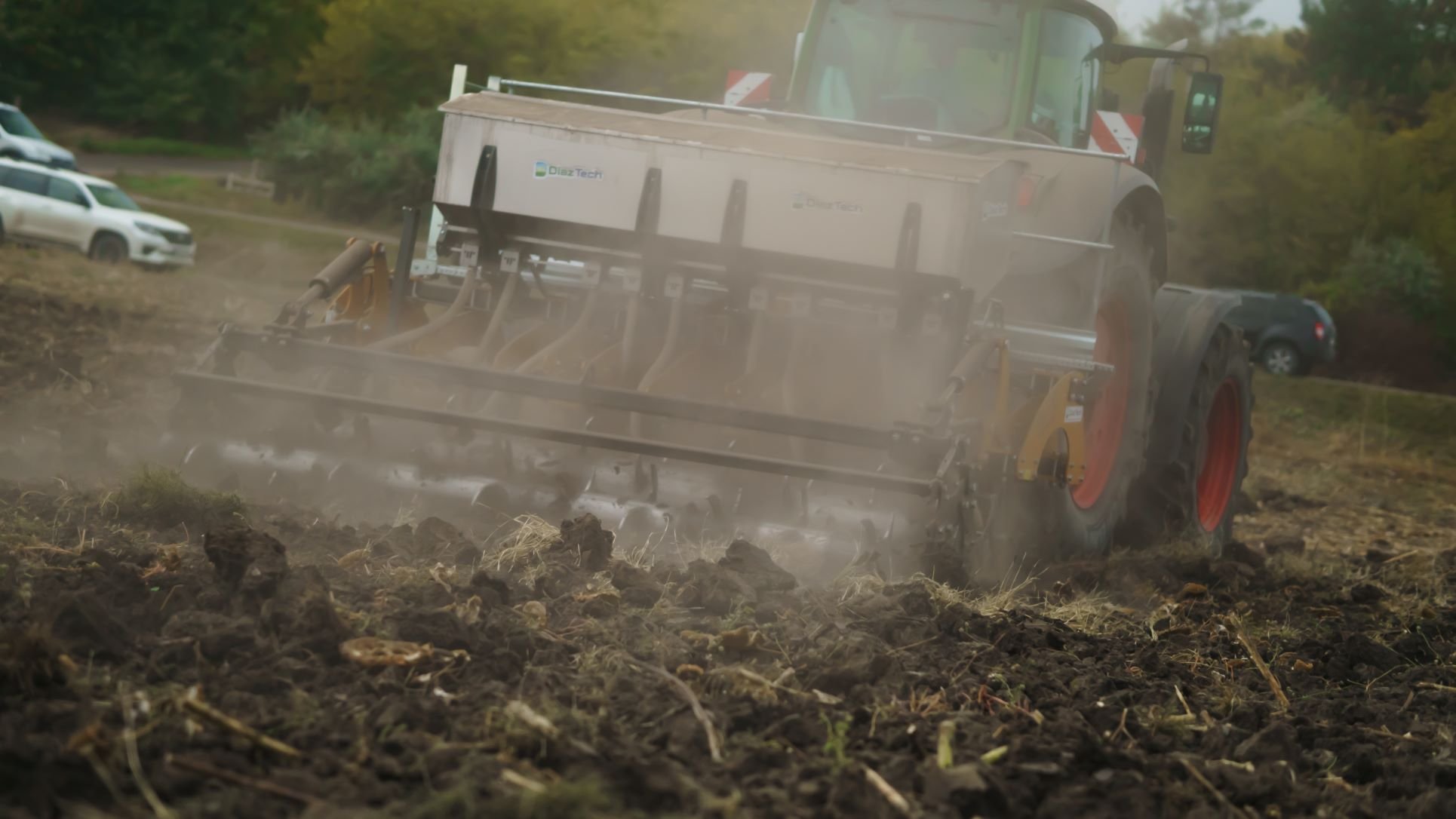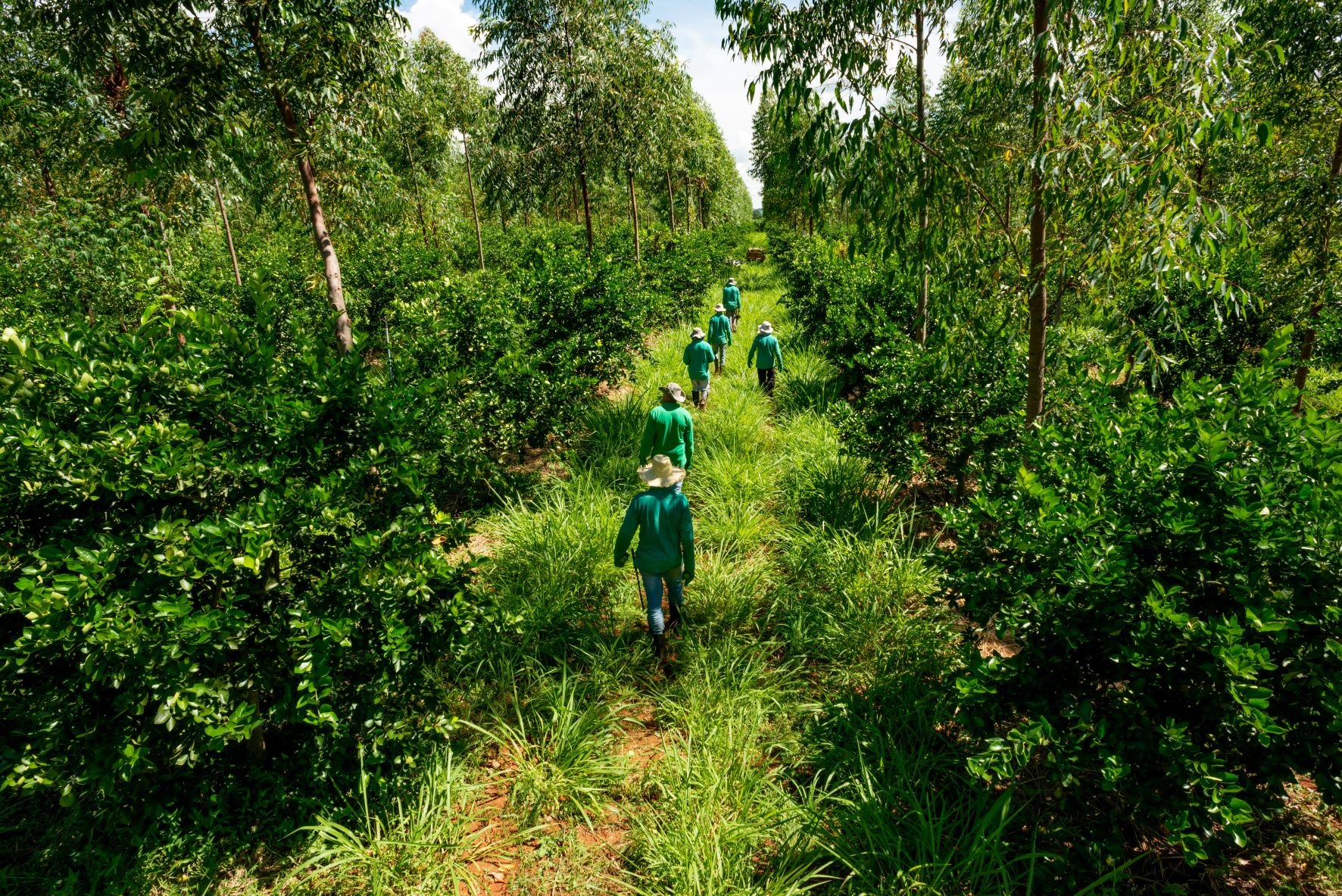How Regenerative Organic is Our Way Forward
Alika Magas | December 9, 2022
The world seems pretty bleak right about now. Average temperatures rise every year. Droughts become more common. Floods already wrack cities across the world. Even sustainably grown organic food isn’t going to cut it with rising food demand. With every day, it almost seems logical to give up hope. Yet, with all this talk of doom and gloom, there is one very simple solution just waiting to be used. Soil.
Healthy soil naturally produces Glomalin which causes it to clump together, making it more resistant to erosion.
Yup, just the plain old dirt under our feet can be our saving grace. After all, soil is one of the pillars holding up the Earth’s ecosystem. It provides wild biodiversity and holds everything from earthworms, to amoebas, microbes, and even bacteria. These microorganisms process the nutrients in the soil, turning them into natural compounds vital to the crop's nutritious value. Not only that, but healthy soil absorbs water faster which reduces a farm’s risk of flooding and ponding—two culprits of soil degradation. What’s even better is that healthy soil naturally sequesters carbon. Forty percent of the carbon used by plants during photosynthesis is funneled into soil by the plant’s root systems. Not only does the carbon released into the soil feed the microorganisms within, creating healthier food, but the earth also retains the carbon.
If we want to take advantage of these natural benefits, however, we need to act fast. It’s estimated that within fifty years, we will have no naturally occurring farmland left to use. This means that our food would be far less nutritious, lack important trace minerals the body needs to absorb, and would all have to be synthetically grown; so really, we only have roughly fifty harvests of crops left before synthetic agriculture becomes the sole means we have of feeding our population.
Don’t worry, though. There’s a lot being done right now to solve this problem—and there’s a big movement already making waves in the agricultural industry. There’s a new form of organic whose main focus is not only on maintaining soil health, but reviving farm land and soil whether they are fertile or not. The movement is called Regenerative Organic and it is constructed upon the idea that there are agricultural practices which actively heal the planet rather than just preserving the earth as it is right now. The movement is founded on three pillars; the Regenerative Organic certification encapsulates healing soil, revitalizing economies across the globe, and requiring the most ethical practices in animal welfare.
Damage left behind by deep tilling.
In order to be Regenerative Organic certified, the farms must be USDA Organic, or some other foreign equivalent, as a prerequisite. From there, the farmers must continuously prove that they’re increasing the soil health of their entire farm with moving benchmarks from 10% regenerative-certified land to 50% by year five of their certification. The organization has different tiers to their certificates—bronze, silver, and gold—which encourage farms to hit the 100% mark. There are also a myriad of other requirements in their animal and social welfare prongs both of which are vital to healing all aspects of the earth. The soil welfare aspect, however, has the most immediate impact on climate change.
Soil health and carbon sequestration ultimately boils down to how the crops are sown and grown year round. For example, tillage is a big problem where it comes to soil degradation. Traditional tillage digs too deep into the topsoil, which makes erosion far more likely as the dirt dries out. Soil erosion means more floods, smaller amounts of naturally occurring top soil, and, eventually, infertile lands. But, simply switching to a different machine which instead disrupts only the uppermost layer of topsoil and then immediately packs it back down over the planted seed keeps the topsoil intact—and the seed now gets to take root in even healthier earth.
No-till drills keep the topsoil intact as they sow seeds.
In addition, farms can also use compost systems to turn their organic waste into completely natural fertilizer which is void of chemical additives. They can also plant cover crops which strengthen the soil through added nutrients during all seasons—this, in the long run, protects the seasonal crops through the winds of autumn and the dry cold of winter. Farms can also plant more perennials whose roots extend far deeper into the ground, increasing the amount of carbon any given acre can sequester throughout the year.
The composite result of Regenerative Organic, then, creates healthier farmland, more fertile farmland, soil biodiversity, cleaner air, clean water naturally filtered by the soil’s composition, and even enhanced wildlife and livestock habitats. The list goes on. What’s even cooler is that Regenerative practices don’t have a specific shopping list of techniques; the alliance knows that different locations on earth require different protocols to keep the soil healthy. All this to say, the Regenerative Certification is based solely on the biological health of the farm, and not the list of practices itself. If a farm proves to sustain healthy, natural soil which improves year after year, the certification is awarded. It is up to the farmer to choose what practices they’ll use.
Regenerative tactics also directly enhance the wellbeing of a farm and the economy. Because one of the successes of a regenerative system is that it enables a farm to grow a vast array of crops, the economic stability of a farm is easier to maintain. If the market price of one crop falls, the farm has several other crops they can make profit off of. What ensures this is the Regenerative tactic of agroforestry, or growing multiple crops on one acre of land. An additional tactic is rotated grazing, which allows livestock to graze on currently unused land year round; the livestock trample dead plant matter back into the ground which causes fertilizer to preexist in the soil when the time comes to plant a new harvest. While a conventional farm may only make $0.10-$3.00 an acre, multi-crop regenerative systems average a profit of $100/acre.
Put all of this together and you get a new version of the agricultural industry that not only increases the collective, average profit of farmers to $100,000,000,000 annually, but you also get soil that can sequester so much carbon that we’d see climate cooling within 20 years of running a Regenerative agriculture industry.
Regenerative tactics allow for multiple crops to be grown on a single acre of farmland, which also increases the profit any given acre of farmland can create.




